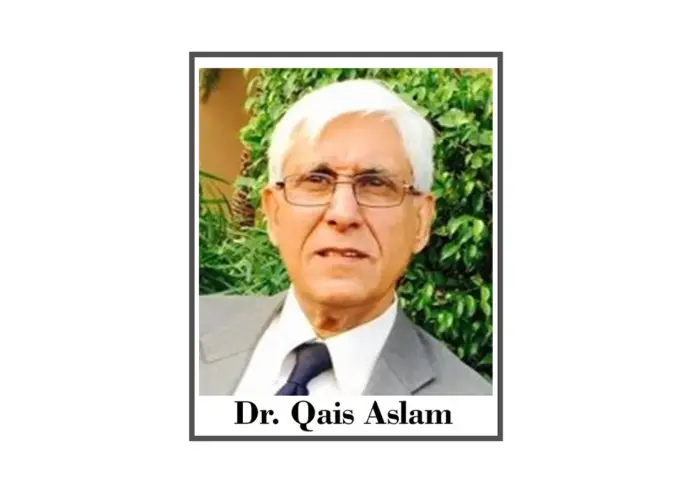Every economy is firmly built on the four pillars called factors of production – land, labor, capital and entrepreneurship (that have management skills, can employ the right person for the right job and take risk for greater profits).
Under capitalism these factors or resources are owned or hired by the private sector who not only take risk, but also manage the most efficient and cost-effective way to value add and produce new products by innovating and aggressive marketing techniques. The government under capitalism facilitates this profit-making activity through its fiscal and monetary policies and acts as a referee between the demand side and supply side and protect the economic activity from fraud through its laws. The government in capitalism promotes competition among market players. Corporate Organizations (MNC’s) in the modern world are large firms run by highly skilled mangers and compete through R&D, innovation, product differentiation, advertisement, after sales services and quality control for sake of corporate social responsibility. Smal and medium enterprises (SME’s) play an important role under capitalism and fill the Neitch that is left by large corporations and in USA, EU, UK, South Korea and Japan. These are the leading economies of the world in terms of GDP.
Under Command economies these tasks are performed by managers in the public sector but now through transition much of the R&D, economic and productive activity is also done by private imitative that has produced a synergy between the planned economy and the market economy as in China, where the government owes the larger corporations while allowing individuals to become billionaires through private initiatives in production, innovation and distribution activities. All economic activity is politically planned, controlled and channelized. China is now the second largest economy by GDP.
In Pakistan there is a mix of public and private economic activity, all of which is disorganized, hinders the progress of one another and has no synergy, R&D, innovation or comparative environment. Where the government does not facilitate economic activity, rule of law, quality control or efficient management of the four factors of production that lack productivity and both the public as well as private sectors produce substandard goods and services that lack export potential and thus the balance of payments crisis that the country is facing. The political masters are busy becringe among themselves, have no economic initiatives for the private sector and the public sector is so inefficient that the input output ratio of the public sector firms just creates circular debt and dependency on foreign and local loans and credit that further puts pressure on the hardworking people of the country through enhanced tax burden. The policies of the government are revenue oriented, rather than economic oriented, because they create a class of people both in the public sector as well as in the private sector that are rent seekers rather than profit makers. Therefore, subsequently in the past fifty or so years the economy has gone downhill rather than becoming solvent, robust and sustainable. Corruption, pilferage of public funds, misuse, mismanagement and downright uneconomic usage of taxpayers’ money on unproductive but lavish lifestyles of government functionaries and politicians alike has become norm of the day putting further pressure on the fragile finical resources of Pakistan. The situation has become such that five percent of the 230 million plus population of the country has become super rich through misappropriation of the fiscal resources, other ten percent or so (the upper middle classes) have also gained from our economic crisis by becoming land mafia, hoarders, smugglers and now speculators of foreign currency. These 15% plus people seldom pay taxes, while are the first to enjoy the fruits of government policies that are usually geared to facilitate their money-making skills and decadent lifestyles. These upper classes whether are in politics, in the government or run industry, NGO’s farming or businesses are a closely knit lot that use inhouse and underhand information to buy land, make deals or even hoard foreign currency in order to become richer and most of them have stopped becoming actual investors and risktakers when there is easy money to be made by influencing or buying government functionaries at different tiers and arms of the government. Real investment has become a difficult business that only one percent of investors are still producing, innovating and exporting in these difficult times, but they also influence policy and government spendings to their own advantage by hook or by crook.
Why Pakistan’s economy has failed and is in crisis should be seen by looking into the productivity of the four factors of production as well as by analyzing the performance of the four sectors that contribute to the GDP of the country, namely Agriculture, Industry, services and the government sector.
It is said that Pakistan is a strategically placed country between economic giants like China, India, Russia and energy giants like Iran, Central Asian countries (CARS) and a link between the Persian Gulf oil rich nations like Saudi Arabia, Oman, Kuwait, and UAE with oil starved nation like China, India etc. We have not used this strategic position to our advantage to earn foreign exchange or fortify our industrial potential.
It is said that Pakistan has potential through at least ten sources of producing electricity (seven of which are environmentally friendly and green, renewable sources) – hydel, solar, wind, waves, geezers, biogases (animal waste), biomaterials (agricultural waste), nuclear, coal and gas that are not environmentally friendly, but the country relies upon foreign oil to produce 60% of its electricity therefore has to spend much needed foreign exchange and thus the balance of payments crisis. Technologies that produce electricity both with the government and the IPP’s are mostly old, substandard or secondhand therefore every rupee invested in the energy sector produces electricity for Rs. 0.25 and creates the circular debt which further burdens the taxpayer and electricity consumers. There are line losses as well as stealing of electricity by the government (70%), big businesses (20%) and even the poor (10%), creating a vicious circle of losses and inefficiency that further makes electricity usage expensive further increasing the cost of investment and living in Pakistan.
It is said that Pakistan has all the climatic conditions and landmass fit for agriculture of different kinds of food and cash crops and that agriculture is the backbone of our economy, because 60% of the people are directly or indirectly engaged in agriculture. In 2022, Agriculture contributed only 22% to GDP of the country. Out of this 22% – 3% came from food crops (Maiz, Wheat and Rice), another 3% from Cash crops (Sugar Cane, Cotton and Tabaco) and another 2# from small crops like vegetables and lentils – a total of 8% is contributed to Pakistan’s GDP through farming. The rest (10%) comes from Cattle Farming, Dairy farming), and horticulture. fisheries (2%), and forests (2%) contribute another 4% to GDP. According to (FAO in Pakistan, 2020) the total land area of Pakistan is approximately 800, thousand square kilometers, or about 80 million hectors, out of which only 22.0 million hectors (27.5%), are under cultivation. 40% of land holdings are with a thousand plus large farmers that cultivate the land through sharecroppers thus fragmenting the land among poor uneducated peasants. Another 40% of landholdings are of small unsustainable farmers who also do not have enough resources to modernize agriculture. Only 20% of landholding is cultivated by progressive capitalist farms that sell their produce in the market. Government investment in agriculture is near zero and this vital sector lacks R&D, innovation, education, finances, technology, modern seed, water and protection against pests, land erosion and now climate change. IN 2021-2022 Pakistan imported cooking (palm) oil, wheat, cotton, sugar, vegetables, pesticides, fertilizers and diesel etc. To name a few, therefore the need for foreign exchange and the balance of payments crisis. Pakistan’s land productivity is least in the region and the world.
It is said that Pakistan is blessed with many kinds of mineral resources like salt, gold, copper, rubies, sapphire, Onex, marble gas, oil, to name a few. Pakistan’s mineral resources contribute only 5.5% to its GDP and the country mostly exports this precious resource in its raw or semi-manufactured form and has not been able to earn billions of dollars through branding and finished goods from these god-gifted riches.
It is said that Pakistan is rich in biodiversity, flora and fauna, that there is a abundance of medicinal plants, roots and barks in the country, yet the country spends millions of much needed foreign exchange in buying pharmaceutical products rather than producing and selling them on the international market or for the needs of its own population.
It is said that Pakistan has the highest mountain ranges in the world with 2,700 glaciers and five rivers as well as rain fed plains and a large cost line full of natural riches. It is sorrowful that these glaciers are melting, these rivers are running dry, and on top of this climate change has wreaked havoc on different parts of the country, flooding agricultural land and drowning villages destroying crops, cattle and people’s homes alike. The land has become uncultivable and at the same time Pakistan from a water abundant country is being transformed into a water deficient nation where average temperatures are increasing yearly and the impact of climate change and water deficiency is seen on the decrees in GDP to the amount of 18% and increase in costs to destruction to infrastructure of an amount of US dollars 30 billion. Pakistan has failed to build dams and water reservoirs for mitigation of adverse results of water erosion, floods and water deficiency.







